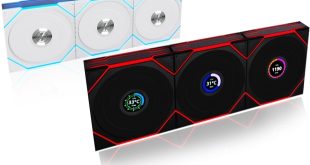We used a simple set-up that is present in the majority of homes.
We plugged the XAV5201 into an isolated socket and connected it directly to our Sky Hub. The XWN5001 was plugged into another isolated socket. Once we confirmed both adapters were working correctly, we connected a PC using one of the supplied cables. We also connected a Samsung 370R5E notebook to test the wireless capabilities of the XWN5001.
All tests were performed on a 40 Mbps line. Background processes that use bandwidth were disabled.
To obtain a baseline reading we placed our laptop approximately 1 meter away from the XWN5001. Lower values indicate stronger performance.
Next, we moved 20 meters away, out the front door. Signal strength remained fairly strong. It is worth noting that three walls, three doors and our Sky Hub's WiFi network stood between us.
Finally, to test a more realistic scenario, we placed our laptop approximately 2.5 meters away in a room directly below the XWN5001. Signal strength remained strong throughout our tests and only deteriorated after we had moved outside the house.
To test bandwidth and the quality of the connection we used http://www.speedtest.net and http://www.pingtest.net. Each test was performed five times, after which we calculated the average speeds and ping times.
Using a server approximately 240 km from our location we received consistently strong results with our WiFi connection. Using a cable we nearly reached the full 40Mb/s available on the line.
Using a server approximately 240 km from our location again, ping times were relatively high for our WiFi connection. Using a cable the adapter fared better, averaging 37 ms.
 KitGuru KitGuru.net – Tech News | Hardware News | Hardware Reviews | IOS | Mobile | Gaming | Graphics Cards
KitGuru KitGuru.net – Tech News | Hardware News | Hardware Reviews | IOS | Mobile | Gaming | Graphics Cards







